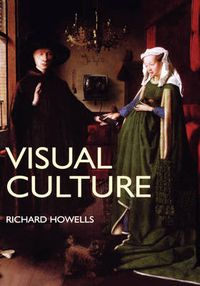
Visual culture - an introduction
Visual Culture is an introductory textbook book on visual literacy, exploring how meaning is both made and transmitted in an increasingly visual world. It is designed to introduce students to the analysis of all kinds of visual texts, whether drawings, paintings, photographs, films, advertisements, television programmes or new media forms. The book is illustrated with copious examples that range from medieval painting to contemporary record covers and is written in a lively and engaging style, avoiding unnecessary jargon. The first part of the book is concerned with differing theoretical approaches to visual analysis, and includes chapters on iconology, form, art history, ideology, semiotics and hermeneutics. The merits and disadvantages of each are discussed, and there is a special focus on one seminal writer for each topic. The second part shifts from a theoretical to a medium--based approach and comprises chapters on fine art, photography, film, television and new media. These investigate the complex relationship between reality and visual representation. As a whole, this textbookbrings seemingly diverse approaches together under one roof while ultimately arguing for a polysemic approach to visual analysis. Each chapter concludes with a section of recommendations for further study. Visual Culture provides an ideal introduction for students taking courses in visual culture and communication in a wide range of disciplines, including media and cultural studies, sociology, art history and design.
Utgiven: 2003
ISBN: 9780745624112
Förlag: Blackwell publishers
Format: Inbunden
Språk: Engelska
Sidor: 304 st
Visual Culture is an introductory textbook book on visual literacy, exploring how meaning is both made and transmitted in an increasingly visual world. It is designed to introduce students to the analysis of all kinds of visual texts, whether drawings, paintings, photographs, films, advertisements, television programmes or new media forms. The book is illustrated with copious examples that range from medieval painting to contemporary record covers and is written in a lively and engaging style, avoiding unnecessary jargon. The first part of the book is concerned with differing theoretical approaches to visual analysis, and includes chapters on iconology, form, art history, ideology, semiotics and hermeneutics. The merits and disadvantages of each are discussed, and there is a special focus on one seminal writer for each topic. The second part shifts from a theoretical to a medium--based approach and comprises chapters on fine art, photography, film, television and new media. These investigate the complex relationship between reality and visual representation. As a whole, this textbookbrings seemingly diverse approaches together under one roof while ultimately arguing for a polysemic approach to visual analysis. Each chapter concludes with a section of recommendations for further study. Visual Culture provides an ideal introduction for students taking courses in visual culture and communication in a wide range of disciplines, including media and cultural studies, sociology, art history and design.
Begagnad bok (0 st)
Varje vecka tillkommer tusentals nya säljare. Bevaka boken så får du meddelande när den finns tillgänglig igen.



